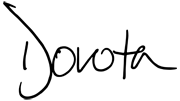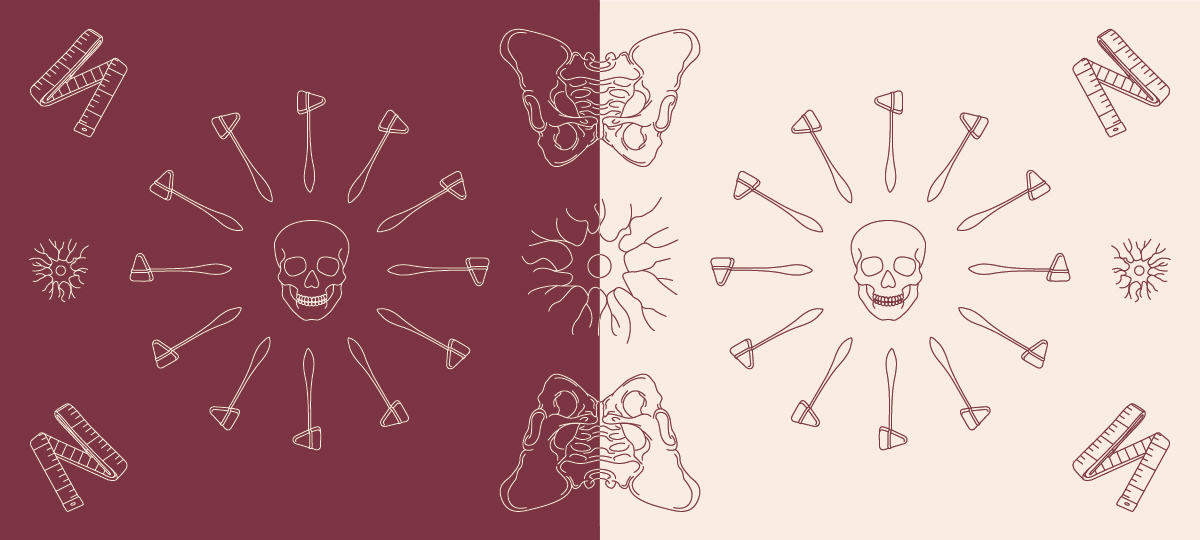Breast health is not a topic that many people speak about unless there is a concern directly related to them, or a loved one. Talking about it shouldn’t be scary despite breast cancer being the most common cancer in Canadian women.
I’m going to be talking about different methods of self-care for breasts which includes self-exams, lymphatic drainage, breast/chest wall massage, and breastfeeding aid. This will be a 3-part series on my social media accounts, with video demonstrations as reference.
Performing any care for your breasts should be done with only self-love and compassion, because it can be an overwhelming experience familiarizing your breast tissue and listening to how your body is responding. If you think about how uncomfortable bras and mammograms are, sometimes therapy can be uncomfortable too, but it takes time (just like any therapy) to notice results.
Breast tissue isn’t only isolated to what can be stuffed (because that’s what it feels like!) into bras, but it can spread along our collarbones and towards the armpits. In some women breast tissue really is isolated in typical anatomy, but every body isn’t typical. Poor bra fits, poor posture, and lack of mobility in the neck and arms, can definitely impact muscular structures underneath your breasts, lymph drainage, and can even cause thicker tissues to form within the breasts. In my experience, I developed a band of thicker breast tissue because of underwires in bras, and having a larger cup size making friction occur consistently. This won’t be the case for everyone, but it can be for some. This is why regular bra fittings are so important!
Breast Exams
Breast exams are ideal to perform once a month, to gain better understanding of what your normal feels and looks like. The tissue changes around your menstrual cycle as we all may know, so this is something to mentally remember as swelling can make it difficult and more tender to palpate. In the perfect world you should do an exam about a week post period for the swelling to go down. So obviously, the more you do it, the easier it will be to feel if somethings off.
Another thing to remember with breasts is that they are lumpy bags of fat and glands. When exploring during palpation, the tissues closer to your armpit feel more bumpy, and closer to the areolas are more grainy like rice or lumpy like oatmeal. This is the perfect opportunity to remind you about making a body journal (I mentioned this in my post, Check Your Guaca-MOLE), and have a section dedicated on your breasts. Make a map of your them and describe what you feel. If there’s a month that you felt a tiny lump or sensitive area, check on it on the next exam. It’s not unusual to have a lump appear then disappear as your tissues change with your menstrual cycle. If it’s consistent beyond the next cycle, then book an appointment with your doctor.
To perform a breast exam (I recommend during or after a hot shower, that way you’re warm and the tissue is easy to manipulate) there are 4 steps;
- Look at your breasts in the mirror with hands on hips. Look at the shape, colour, and size
- Look at your breasts in the mirror again, but with arms raise above your head.
- While laying down, use your right hand to palpate the left breast, and vice versa. Start with using the pads of the index, middle, and ring fingers in a firm touch, small circular motions moving from areola, outward. You can move your finger pads up and down if that feels better for you. Make sure you go towards your armpit, into the armpits, along the collar bones, and even to the top of your abdomen. Use more pressure for thicker parts of your chest, you should feel your ribcage.
- Then, perform the same palpation pattern while standing. If doing this in the shower, use some soap or shower gel that way you can have a really nice glide and palpation may be easier for you.
Things to look for that you should pay a visit with your doctor are;
– dimpling, puckering, or bulging of skin
– a nipple that has changed position or has inverted
– redness, soreness, rash, or swelling
– any fluid leaking from nipples (blood, milky, watery, yellow)
Breast Lymphatic Drainage
Lymphatic drainage can be complex when it comes to the breasts, as the lymph movement isn’t completely linear like in your legs and arms, and needs more manual guidance in movement for proper circulation and filtration. For more info on the lymphatic system, you can refer to my post, “Lymphatic Drainage. You Don’t Need No Draino!”.
To work on lymph, you need to pump in a specific rhythm and direction to mimic the natural flow of the lymph system. Looking at the lymph nodes, the axillary nodes receive 75-90% of the breasts’ lymph and the internal mammary nodes receive 10-25% of the breasts’ lymph. In order to give the lymph system a jump start, it’s important to pump the nodes along the hollow of your collarbones (both sides) and deep into your armpits.
Starting at the hollows of your clavicles (collarbones), gently apply enough pressure with the tips of a couple fingers to engage in the tissue, no need to dig in or press hard enough to feel pain or tenderness as light touch is crucial. You’re going to pump and release in this area about 10-20 times.
If working on the right breast, you’re going to use your left hand to reach deep into the armpit, behind your pectoralis (pec) muscle. Then you’re going to pump inwards for 10-20 times as well.
After this, while still working on the right side, you then gently apply short strokes with the palms of your hands or fingers from nipple, outward towards the neck or armpit, respectfully. You should stroke each section of the breast about 5-7 times, but you can always do more if you like.
Repeat on the other side, remembering to pump the armpit first, prior to applying strokes on the breast.
Finally, you should pump the hollow of your clavicles again.
This technique can alleviate breast tenderness and swelling in relation to your menstrual cycle, as well as after any surgeries. You can always book an appointment with me if you need help or guidance. This is also a great technique to perform after wearing a tight, ill-fitting bra as your breasts can feel super boggy and stagnant.
Breast Massage
Regular massage for the breasts and chest wall can help you feel less restricted especially when it comes to working in sedentary careers. When on the computer, preparing food, gardening, or literally any movement when you’re reaching your arms forward can cause long-term postural effects. The muscles of the chest and front of the shoulders over time stay in a shortened position therefore causing pain, stagnant tissue, and reduced mobility.
Performing breast and chest massage is much easier than manual lymphatic drainage, because you can use whichever depth of pressure that you prefer.
Using oil, apply over your breasts and chest, and focus on just your pec major muscle. Pectoralis major looks like a fan, running along your breastbone, and tapering off into the front of your upper arm. To accurately strip this muscle out, you would gently strip or knead from breastbone in a linear direction towards the shoulder. To ensure you don’t lose track, start from the top of the breastbone, and gradually work your way down along it, so you’re getting the attachment point.
Pectoralis minor however, is a much smaller and deeper muscle. You would start from just above the areola, and strip vertically/outwards toward the front of the shoulder, stopping at your clavicle. Slightly deeper pressure is ideal to narrow this muscle down.
With the breast, you have more freedom with massage because you don’t need to be super light with pressure (unless you prefer it, totally ok!). Using the pads of your palms and fingers, you can knead in circular movements, and even isolating the breast with both hands and pulling the breast gently in circular movements. A great technique is cupping underneath the breast like a bra, but with one hand at a time, you stroke upwards, still lifting the breast tissue, and placing the hand back, while alternating.
Another technique (I call it the squid), is to place your hands at the base of your breast, close the space so you would be puckering the breast outwards (like the head of a squid), then slide your hands toward the nipple, and spread your hands back down to the base of the breast to flatten it. This pumping action can help with lymph drainage as well, but mainly increases circulation that would be inhibited from a bra as an example.
Breastfeeding
In the perfect world, your baby would latch easily, painlessly feed, and breasts would empty fully. Again, the perfect world! A couple common nasty side effects from breastfeeding that are super common are mastitis, clogged ducts and engorgement, and these can be helped with massage.
Mastitis;
Can be caused by clogged ducts, cracked nipple (allowing bacteria to make its way through), and engorgement. It does have to be treated with antibiotics, however to help, it’s best to frequently express to drain the breast(s). Using a c-hold with your fingers and thumb, grip the breast by placing close to (not touching) the areola and press towards your chest, then compress the breast still in the c-hold, and move towards the nipple without lifting the fingers. Using a pump will most likely be too painful, so manual is the way to go. Milk backing up the breasts can make mastitis worse so try to express until empty. This technique should be performed for engorged breasts as well prior to a feeding, and it’s idea to breastfeed or pump more often.
Clogged/Plugged Ducts;
If your breasts are overly full or you’ve gone longer than usual between feeds, milk can back up the ducts. You can feel discomfort, a hard lump, and some redness. Although if you’re experiencing a fever as well, that would be mastitis. Frequent rest is beneficial, and using a warm compress prior to breast massage may help unclog the duct giving you pain relief. Instead of the method mentioned above, gentle circular kneading to help free up the duct would be an ideal prerequisite to expressing.
Give The Honesty Policy a follow on Facebook at @thehonestypolicyca and on Instagram at @thehonestypolicyca . Here you can watch my tutorials and read condensed versions of my blog posts!

Article Sources
Subscribe to our newsletter!
The medical information on this site is provided as an information resource only, and is not to be used or substituted for any diagnostic or treatment purposes. The information we provide is for general use. Always seek the guidance of your doctor or other qualified health professional before making any medical decisions.
If you think you may have a medical emergency, call your doctor, go to the nearest hospital emergency department, or call the emergency services immediately. If you choose to rely on any information provided by The Honesty Policy, you do so solely at your own risk.
